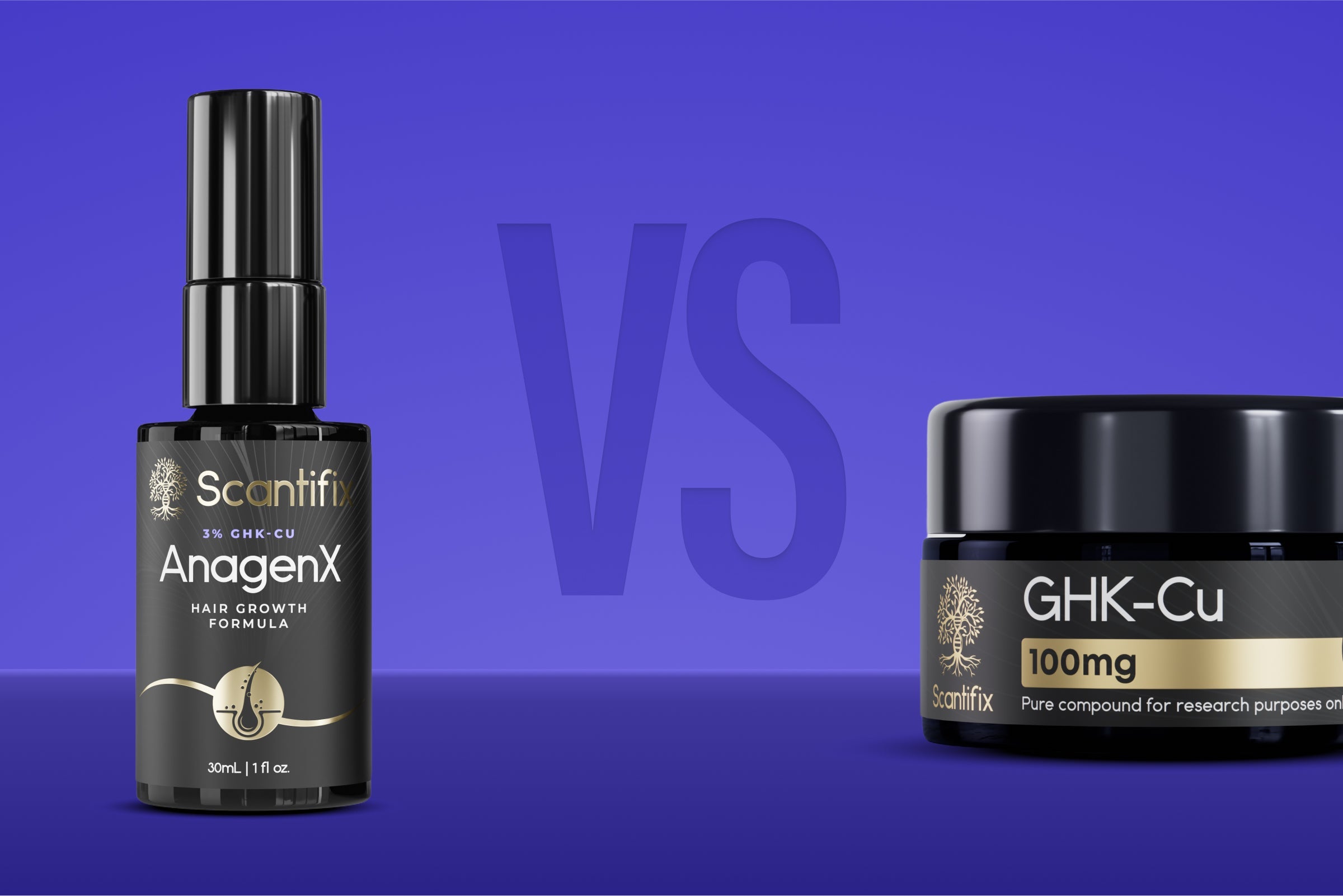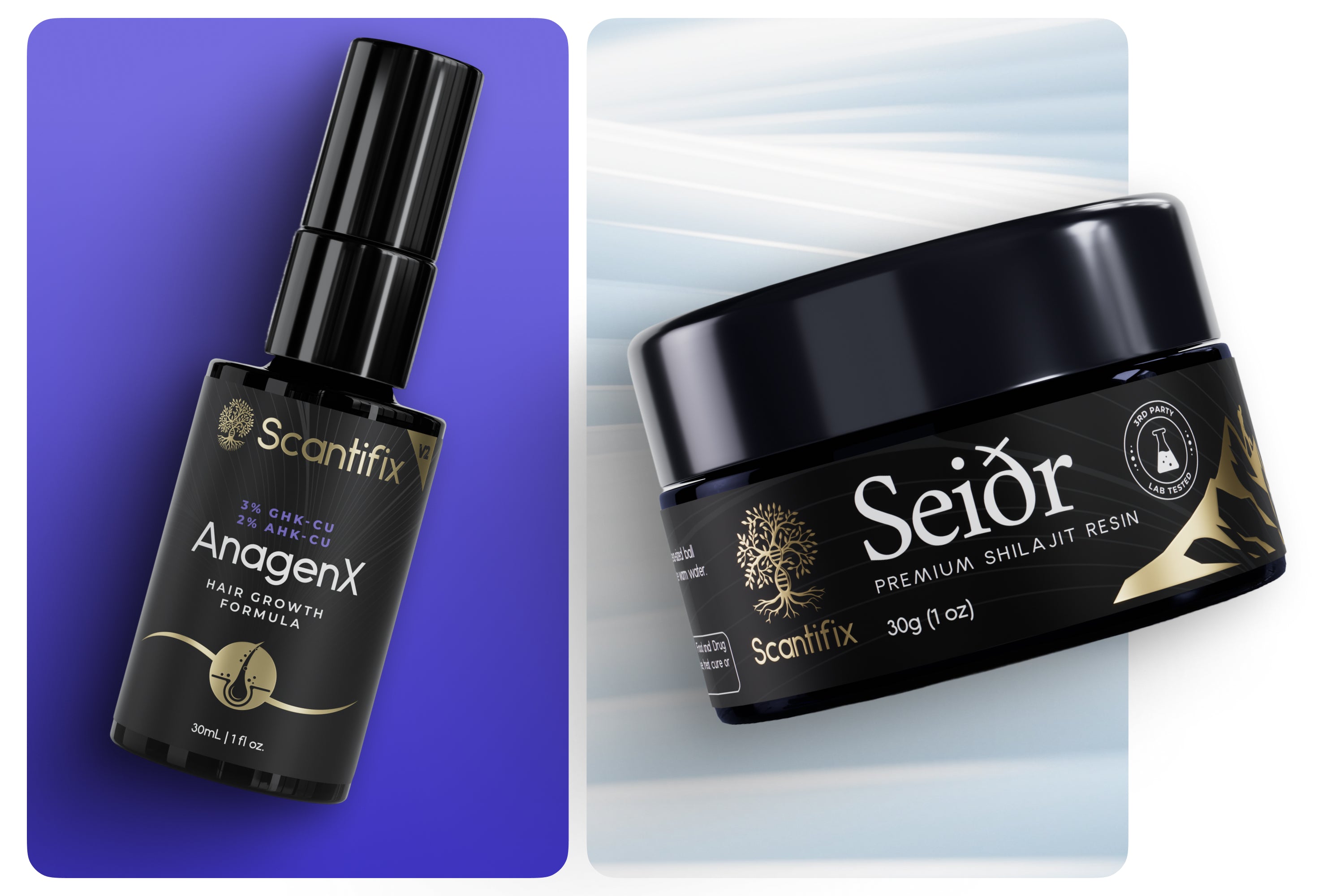The days of treating concerns like hair loss, scalp inflammation, or skin aging with harsh chemicals or invasive procedures may soon be behind us. Thanks to advanced peptide science, it's now possible to support regeneration and resilience in a way that supports your body’s natural repair systems. One peptide in particular, BPC-157, is being explored for its ability to support tissue healing, inflammation modulation, and restoration of the scalp environment. These factors may be especially relevant for those experiencing hair thinning, reduced follicle activity, or scalp stress.
BPC-157 is emerging as a gentle, biologically guided alternative to traditional treatments. Let’s take a closer look at what it is, how it may work, and where it fits in a modern approach to hair, scalp, and skin health.
What Is BPC-157?
BPC-157 is a synthetic peptide derived from a larger protective compound found naturally in the human body. Originally isolated from a protein in the gastric system, this short chain of amino acids has been studied in research settings for its ability to promote tissue healing and regeneration.
Unlike many peptides that focus on a specific target like collagen or pigmentation, BPC-157 appears to have a broader set of signaling capabilities. It gets its abbreviation “BPC” from the term "body protective compound." It’s often referred to this because of its potential to support tissue repair, reduce oxidative stress, and encourage vascular balance.
BPC-157 isn’t classified as a pharmaceutical. It’s a research peptide that interacts with biological pathways to promote healing at the cellular level. Researchers are exploring its possible role in gut health, tendon and joint recovery, and increasingly, in skin and hair applications.
How Does BPC-157 Work?
Studies suggest BPC-157 works as a signaling molecule—a messenger that influences how cells behave, especially in the presence of injury, inflammation, or imbalance.
Some of the biological processes it may influence include:
-
- Tissue regeneration: BPC-157 may help stimulate growth factors associated with repair and remodeling.
- Blood flow regulation: It may encourage angiogenesis, or the formation of new blood vessels, and support circulation in localized areas.
- Anti-inflammatory signaling: BPC-157 may help reduce overactive immune responses that interfere with healing, including in sensitive skin or scalp tissue.
- Barrier integrity: It’s also being explored for its ability to restore tissue structure and promote homeostasis (biological balance) in stressed environments.
These effects are particularly compelling when it comes to hair growth and scalp health, where inflammation, poor circulation, and barrier dysfunction often underlie thinning or shedding.
BPC-157 Benefits for Hair and Scalp Health
Hair doesn’t grow in isolation. Behind every strand is a follicle, and behind every follicle is a biological environment that must be healthy and well-regulated. Inflammation, oxidative stress, and circulation problems can disrupt this environment, which may lead to shedding, thinning, and weaker hair over time.
Here’s where BPC-157 peptide benefits may come into play:
1. Calming Scalp Inflammation
Many forms of hair loss, including telogen effluvium and androgenetic alopecia, are linked to inflammatory signals in the scalp. BPC-157 is being explored for its potential to modulate inflammatory pathways, which would make the scalp a more welcoming environment for follicles to thrive.
2. Supporting Blood Flow and Nutrient Delivery
Healthy hair growth requires oxygen and nutrients delivered through microcirculation. BPC-157 may help restore and support blood vessel function, which could improve nutrient access in the scalp and help reawaken dormant follicles.
3. Promoting Barrier Repair
When the scalp barrier is damaged, whether from harsh products, styling practices, or environmental stress, it becomes harder for follicles to function normally. BPC-157 is being studied for its ability to rebuild tissue structure and improve moisture retention, both of which are important for follicle stability.
4. Creating a Synergistic Foundation
BPC-157 doesn’t act alone. In the right formulation, it can amplify the effects of other peptides for hair growth like GHK-Cu (for follicle activation) or GHK-Biotin (for strand strengthening). Together, these peptides create a layered strategy for fuller, stronger hair.
Additional Potential Skin Health Benefits
While most of the focus here is on hair and scalp, BPC-157 is also being explored for skin resilience, particularly in topical products that aim to reduce irritation or support barrier recovery.
Some potential skin-related effects under exploration include:
-
- Accelerated healing from minor irritations or surface damage
- Reduced redness and sensitivity through inflammation support
- Improved hydration by restoring barrier lipids and integrity
- Structural support for skin undergoing stress or environmental exposure
These benefits may be especially helpful for those with sensitive, reactive, or dry skin looking to restore balance without triggering flare-ups.
BPC-157 in AnagenX: A Targeted Hair and Scalp Formula
If you're interested in trying BPC-157 in a topical format designed for hair growth, AnagenX is a clean, clinically inspired formula that features BPC-157 alongside two other powerful peptides for hair growth and health: GHK-Cu and GHK-Biotin.
Here’s how it works:
-
- BPC-157 supports the scalp environment by reducing inflammation and improving microcirculation.
- GHK-Cu helps stimulate dormant follicles and support new hair growth (Pickart & Margolina, 2018).
- GHK-Biotin reinforces hair strand strength and anchoring at the root (Active Peptide Company, 2014).
Together, this trio of peptides works synergistically to offer a multi-pathway strategy for healthier, fuller hair. BPC-157 works to create the conditions that allow GHK-Cu and GHK-Biotin to be more effective—calming inflammation, improving circulation, and restoring scalp balance so that follicle-activating and strand-strengthening peptides can do their work more efficiently.
What to Look for in the Best BPC-157 Products
Not all peptide products are created with the same care or scientific standards. If you’re shopping for the best BPC-157, here are a few key things to consider:
-
- Purity and testing: Look for products that are third-party tested with at least 98% purity and clear Certificates of Analysis (COAs).
- Clean formulation: Avoid products with synthetic fragrances, alcohols, or harsh preservatives. These can cancel out the benefits you’re trying to gain.
- Protective packaging: Peptides are light- and temperature-sensitive. Ideal packaging includes MIRON Violetglass or dark amber bottles.
- Synergy with other peptides: The most effective topical solutions combine BPC-157 with complementary peptides like GHK-Cu or GHK-Biotin for layered results.
- Brand transparency: Trustworthy companies are upfront about sourcing, concentrations, and ingredient integrity.
At Scantifix, we hold ourselves to these standards with every product we formulate—including AnagenX.
Final Thoughts
Everything researchers have learned so far about BPC-157 points to a peptide with meaningful potential in hair, scalp, and skin care. It’s not a miracle cure, but it offers a thoughtful and biologically aligned alternative to traditional treatments that often come with risks or side effects.
Whether used on its own or as part of a synergistic peptide blend, BPC-157 supports a regenerative, science-forward approach to personal care. For those exploring peptide-based solutions for hair regrowth or scalp recovery, it’s a standout ingredient worth watching.
To experience BPC-157 in a clean, high-purity format, AnagenX offers an easy, transparent starting point with results that speak for themselves.
Resources
Active Peptide Company. (2014). Biotin-GHK in hair follicle and hair loss: Scientific presentation. https://www.activepeptide.com/wp-content/uploads/2014/06/Biotin-GHK-Presentation-Active-Peptide-Company.pdf
Pickart, L., & Margolina, A. (2018). Regenerative and protective actions of the GHK-Cu peptide in the light of the new gene data. International Journal of Molecular Sciences, 19(7), 1987. https://doi.org/10.3390/ijms19071987






Leave a comment
All comments are moderated before being published.
This site is protected by hCaptcha and the hCaptcha Privacy Policy and Terms of Service apply.